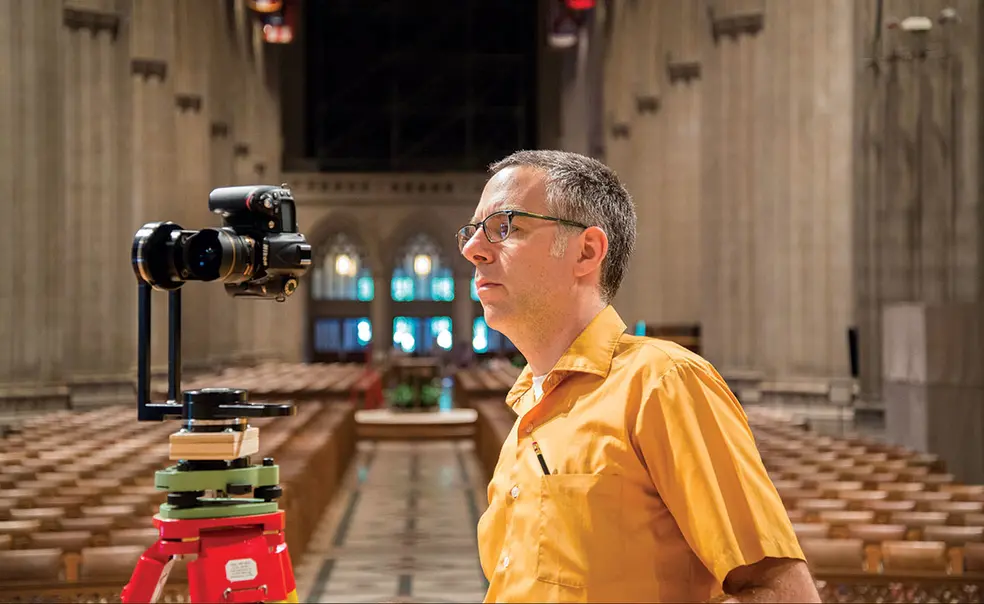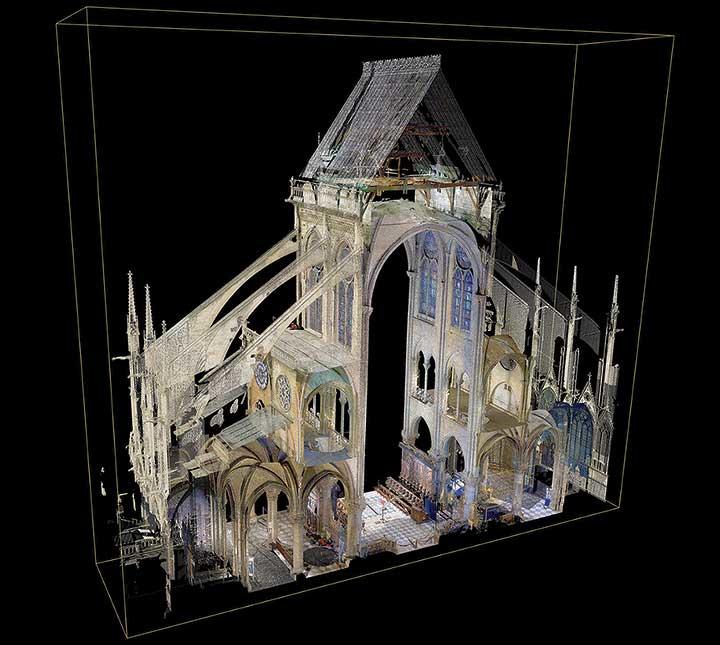Andrew Tallon ’91: A Model of Grace
One Princetonian’s lifelong love of Notre Dame may aid its post-fire reconstruction
When the late Andrew Tallon ’91 visited Notre Dame Cathedral for the first time, he had, as the French say, le coup de foudre. “He saw it and fell in love with it,” says his wife, Marie Tallon. He was just 9 and living in Paris with his family while his mother studied at the Sorbonne. Tallon became obsessed with the 12th-century building. “He had a notebook in which he wrote down the whole story of Notre Dame,” Marie says. “It was a lifelong passion.”
Decades later, after Tallon became a professor of art and architectural history at Vassar College, he traded in his notebook for more high-tech techniques of studying the ancient church. Using a portable laser scanner, he sent billions of beams of light throughout its interior, capturing the space in a 3-D model accurate to within a few millimeters.
Tallon died of brain cancer in the fall at age 49, mere months before his beloved cathedral suffered the calamitous fire that destroyed its roof. But his work will live on to help preserve it.
At Princeton, Tallon was inspired by the late Robert Mark, Princeton professor of civil engineering and architecture, to translate his boyhood passions into a career. “Robert Mark was the person who really exposed Andy to the beauty and wonder of the Gothic,” says John Ochsendorf *98, professor of architecture at MIT and one of Tallon’s collaborators. At Princeton, Tallon sang in the Glee Club, touring cathedrals in France, Italy, and Greece. “He always said singing in those buildings left a strong impression on him,” says Marie. Tallon wrote his senior thesis on the acoustics of medieval cathedrals and got a Ph.D at Columbia, where Ochsendorf served on his doctoral committee. “To get access to a medieval building with Andy was an absolute joy,” Ochsendorf says. “He would always find ways to get into the vault and climb up to all the secret spaces that weren’t easy to reach.”
Tallon pioneered his laser-scanning techniques, in part, to study how old buildings changed and settled over the centuries. “It’s a kind of anthropology, seeing human activity through cold stone and mortar,” Tallon told me in an interview last year for Vassar’s alumni magazine. “You have the thrill of peering back in time and witnessing the story of a building in a way that hasn’t been possible until now.” He was just as interested, however, in bringing alive the buildings as a teaching tool for students and others who might not have access to Gothic cathedrals, combining the scans with panoramic photos of the interior of buildings to create a photo-realistic model.
Near the end of his life, Tallon worked to create a foundation called the Friends of Notre-Dame de Paris to raise funds to repair the cathedral. With the damage that Notre Dame suffered in April, his scan of the building provides the most complete record of the building before the fire. His work could help understand the craftsmanship that went into creating the roof of Notre Dame, which required more than 1,000 individual oak trees. The French government is still deciding whether to try to authentically reconstruct the roof, or re-create it using lighter, more modern materials. But it is already using Tallon’s model to better assess the damage the interior of the cathedral sustained from fire and water damage.
No matter how the cathedral is eventually repaired, Tallon’s work will prove invaluable to architectural historians, preserving the structure of the cathedral virtually in a way that will live on, perhaps, for centuries to come. “It is a beautiful little object,” Marie says of the scan, “and a great gift to future generations of scholars.”













2 Responses
Norman Ravitch *62
6 Years AgoOnly in France
While Parisian authorities have reassured us that terrorism played no role in the fire at the cathedral of Notre Dame, a new problem arises: All those promises of substantial financial contributions from the very rich have turned out to be only hypocritical statements of self-regard. No monies have come from them, only from ordinary people. Only in France are the rich the most selfish found anywhere; just read a Balzac novel!
Norman Ravitch *62
6 Years AgoPassing Interest
When is the last time you read about the fate of Notre Dame in Paris? I would suppose about a month ago. It therefore at least in this country cannot have made the list of atrocities. "Game of Thrones" has aroused more interest than Trump's work to demolish our constitution or the burning of Notre Dame de Paris.